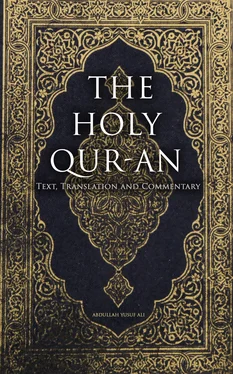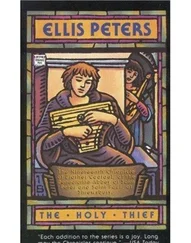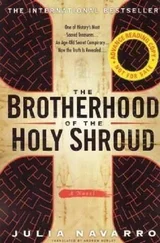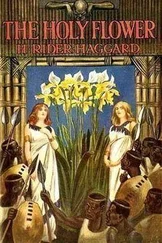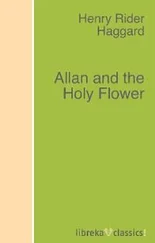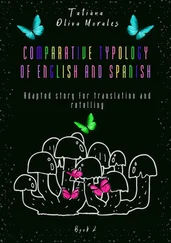Abdullah Ali - The Holy Qur-an - Text, Translation and Commentary
Здесь есть возможность читать онлайн «Abdullah Ali - The Holy Qur-an - Text, Translation and Commentary» — ознакомительный отрывок электронной книги совершенно бесплатно, а после прочтения отрывка купить полную версию. В некоторых случаях можно слушать аудио, скачать через торрент в формате fb2 и присутствует краткое содержание. Жанр: unrecognised, на английском языке. Описание произведения, (предисловие) а так же отзывы посетителей доступны на портале библиотеки ЛибКат.
- Название:The Holy Qur-an: Text, Translation and Commentary
- Автор:
- Жанр:
- Год:неизвестен
- ISBN:нет данных
- Рейтинг книги:5 / 5. Голосов: 1
-
Избранное:Добавить в избранное
- Отзывы:
-
Ваша оценка:
- 100
- 1
- 2
- 3
- 4
- 5
The Holy Qur-an: Text, Translation and Commentary: краткое содержание, описание и аннотация
Предлагаем к чтению аннотацию, описание, краткое содержание или предисловие (зависит от того, что написал сам автор книги «The Holy Qur-an: Text, Translation and Commentary»). Если вы не нашли необходимую информацию о книге — напишите в комментариях, мы постараемся отыскать её.
The Holy Qur-an: Text, Translation and Commentary — читать онлайн ознакомительный отрывок
Ниже представлен текст книги, разбитый по страницам. Система сохранения места последней прочитанной страницы, позволяет с удобством читать онлайн бесплатно книгу «The Holy Qur-an: Text, Translation and Commentary», без необходимости каждый раз заново искать на чём Вы остановились. Поставьте закладку, и сможете в любой момент перейти на страницу, на которой закончили чтение.
Интервал:
Закладка:
(8) Tafsīr Jalālain . Written by the two Jalal-ud-dīns, one of whom was the author of the Ilqān , mentioned above, d. 911 H. A concise and meritorious Commentary, on which again a number of Commentaries have been written.
(9) Our country has produced some notable scholars in the realm of Tafsīr . They wrote in Arabic and Persian, and the latter ones have written in Urdu.
The earliest I can trace is Shaikh ‘Alī lbn Ahmad Mahaimī (of Māhim, near Bombay), d. 835 H. = 1432 A.D., author of the Tafsīr Rahmānī . Almost contemporary with him was ‘Allāma Shams-ud-dīn, of Daulatābād and Delhi, who lived during the brilliant reign of lbrahīm Sharqī of Jaunpur (1400-1440 A.D.). He wrote in Persian. During the nineteenth century, the famous Muhaddith of Delhi, Shah Walī-ullāh, and his two sons Shah ‘Abdul ‘Aziz (d. 1824) and Shah ‘Abdul Qadir (d. 1826) wrote both. translations and Commentaries. Shah ‘Abdul ‘Aziz wrote in Persian and Shah ‘Abdul Qādir in Urdu. The Urdu Commentary of Sir Sayyid Ahmad Khān of ‘Aligarh (d. 1898) has not met the approval of the ‘Ulama. On the other hand the more recent Urdu Commentary of Maulvi ‘Abdul Haqq, the Tafsīr Haqqānī , has passed through several editions, is quite modern in tone and manageable in bulk, and is widely circulated in India. I have derived much instruction from it and have used it constantly. The Commentary of Maulvi Abul Kalām Āzād has been planned on a spacious scale and has not yet been finished.
(10) The Modernist school in Egypt got a wise lead from the late Shaikh Muhammad ‘Abduh (d. 1323 H.= 1905 A.D.), whose unfinished Commentary is being completed by Muhammad Rashīd Ridhā, the talented editor of the Manār newspaper. The work of Shaikh Tantāwī, Jauhari, a pupil of ‘Abduh, finds the "jewels” of the Qur’an and of the sciences mutually illuminative, and suggests many new lines of thought. ‘Allāma Farīd Wajdī is also spoken of as a good modern Commentator: l have not yet been able to get a copy of his work.
(11) It has been said that the Qur'ān is its own best Commentary. As we proceed with the study of the Book, we find how true this is. A careful comparison and collation of passages from the Qur'ān removes many difficulties. Use a good Concordance, such as the one I have named among the Works of Reference, and you will find that one passage throws light on another.
Translations Of The Qur'an
Table of Contents
Almost all languages spoken by Muslims have translations of the Qur'ān in them. Usually the Text is printed with the Translation. If the language is undeveloped, many of the Arabic words of the Qur'ān are taken over bodily into it for want of corresponding words in the language. Even in cultivated languages like Persian or Turkish, the introduction of religious terms from Arabic gave a body of words which were common to the whole Islamic world, and thus cemented that unity of the Muslim Brotherhood which is typified by the Qibla. Where the notion itself is new to the speakers of polished languages, they are glad to borrow the Arabic word expressing that notion and all the associations connected with it. Such a word is Qibla . Where the language is undeveloped, the translation is nothing more than a rough explanation of the Arabic Text. The translation has neither grammatical finish nor a form which can stand independently by itself. That is what happened with the earlier Urdu translations. They were really rough explanations. The ambition of every Muslim is to read the sounds of the Arabic Text. I wish that his or her ambition were also to understand the Qur'ān, either in Arabic or in the mother tongue or some wel1·developed tongue which he or she understands. Hence the need for good and accurate translations.
The translations into non-European languages known to me are: Persian, Turkish, Urdu, Tamil (used by Moplas), Pashto (for Afghans), Bengali, Malay, some of the languages of the Eastern Archipelago, and some of the African languages. I believe there is also a Chinese (dialectical) translation.
The earliest Urdu translation was by Shāh ’Abdul Qādir of Delhi (d. 1826). He has already been mentioned among the Indian Commentators. Since then numerous Urdu translations have followed, some of which have been left incomplete. Among the complete ones, much used at the present day, may be mentioned those of Shāh Rafī’ud-din of Delhi. Shāh Ashraf ’Alī Thānawī, and Maulvi Nazīr Ahmad (d. 1912). Personally I prefer the last. The projected Urdu translation by Hakīm Ahmad Shujā' has not yet been published.
Before the development of the modern European vernaculars, the cultivated language of Europe was Latin. A Latin translation was made for the Monastery of Clugny about 1143 (in the sixth century of the Hijra) but not published till 1543. The place of publication was Basle and the publisher Bibliander. This was translated into Italian, German, and Dutch. Schweigger’s German translation was published at Nurenburg (Bavaria) in 1616. A French translation by Du Ryer was published at Paris in 1647, and a Russian one at St. Petersburg in 1776. Savary’s French translation appeared in 1783, and Kasimirski's French translation (which has passed through several editions) first appeared in 1840, the French interest in Islam having been stimulated by French conquests in Algeria and North Africa. The Germans have followed up Schweigger with Boysen’s translation in 1773, Wahl`s in 1828, and Ullmann’s (first edition in 1840). I believe the Ahmadiya Association of Lahore have in hand a fresh translation into German and Dutch.
Meanwhile Maracci had produced in 1689 a Latin version of the Qur'ān with the Arabic Text and quotations from various Arabic Commentaries, carefully selected and garbled, so as to give the worst possible impression of Islam to Europe. Maracci was a learned man, and there is no pretence about the object he had in view, viz. , to discredit Islam by an elaborate show of quotations from Muslim authorities themselves. Maracci was himself a Confessor to Pope Innocent XI; his work is dedicated to the Holy Roman Emperor Leopold I; and he introduces it by an introductory volume containing what he calls a "Refutation of the Qur'ān."
The first English translation by A. Ross was but a translation of the first French translation of Du Ryer of 1647, and was published a few years after Du Ryer’s. George Sale’s translation (1734) was based on Maracci’s Latin version, and even his notes and his Preliminary Discourse are based mainly on Maracci. Considering that Maracci’s object was to discredit Islam in the eyes of Europe, it is remarkable that Sale's translation should be looked upon as a standard translation in the English·speaking world, and should pass through edition after edition, being even included in the series called the Chandos Classics and receiving the benediction of Sir E. Denison Ross. The Rev. J. M. Rodwell arranged the Sūras in a rough chronological order. His translation was first published in 1861. Though he tries to render the idiom fairly, his notes show the mind of a Christian clergyman, who was more concerned to "show up" the Book than to appreciate or expound its beauties. Prof. E. H. Palmer’s translation (first published in 1876) suffers from the idea that the Qur'ān ought to be translated into colloquial language. He failed to realise the beauty and grandeur of style in the original Arabic. To him that style was "rude and rugged": we may more justifiably call his translation careless and slip-shod.
The amount of mischief done by these versions of non-Muslim and anti·Muslim writers has led Muslim writers to venture into the field of English translation The first Muslim to undertake an English translation was Dr. Muhammad 'Abdul Hakim Khān, of Patiila, 1905. Mīrzā Hairat of Delhi also published a translation, (Delhi 1919): the Commentary which he intended to publish in a separate volume of Introduction was, as far as I know, never published. My dear friend, the late Nawwāb ’Imād-ul-Mulk, Saiyid Husain Bilgrāmī, of Hyderabad, Deccan, translated a portion, but he did not live to complete his work. The Ahmadīya Sect has also been active in the field. Its Qādiyān Anjuman published a version of the first Sīpāra in 1915. Apparently no more was published. Its Lahore Anjuman has published Maulvi Muhammad ’Alī’s translation (first edition in 1917), which has passed through more than one edition. It is a scholarly work. and is equipped with adequate explanatory matter in the notes and the Preface, and a fairly full Index. But the English of the Text is decidedly weak, and is not likely to appeal to those who know no Arabic. There are two other Muslim translations of great merit. But they have been published without the Arabic Text. Hāfiz Gulām Sarwar’s translation (published in 1930 or 1929; deserves to be better known than it is. He has provided fairly full summaries of the Sūras, section by section, but he has practically no notes to his Text. l think such notes are necessary for a full understanding of the Text. In many cases the Arabic words and phrases are so pregnant of meaning that a Translator would be in despair unless he were allowed to explain all that he understands by them. Mr. Marmaduke Pickthall’s translation was published in 1930. He is an English Muslim, a literary man of standing, and an Arabic scholar. But he has added very few notes to elucidate the Text. His rendering is "almost literal": it can hardly be expected that it can give an adequate idea of a Book which (in his own words) can be described as "that inimitable symphony the very sounds of which move men to tears and ecstasy." Perhaps the attempt to catch something of that symphony in another language is impossible. Greatly daring, I have made that attempt. We do not blame an artist who tries to catch in his picture something of the glorious light of a spring landscape.
Читать дальшеИнтервал:
Закладка:
Похожие книги на «The Holy Qur-an: Text, Translation and Commentary»
Представляем Вашему вниманию похожие книги на «The Holy Qur-an: Text, Translation and Commentary» списком для выбора. Мы отобрали схожую по названию и смыслу литературу в надежде предоставить читателям больше вариантов отыскать новые, интересные, ещё непрочитанные произведения.
Обсуждение, отзывы о книге «The Holy Qur-an: Text, Translation and Commentary» и просто собственные мнения читателей. Оставьте ваши комментарии, напишите, что Вы думаете о произведении, его смысле или главных героях. Укажите что конкретно понравилось, а что нет, и почему Вы так считаете.
